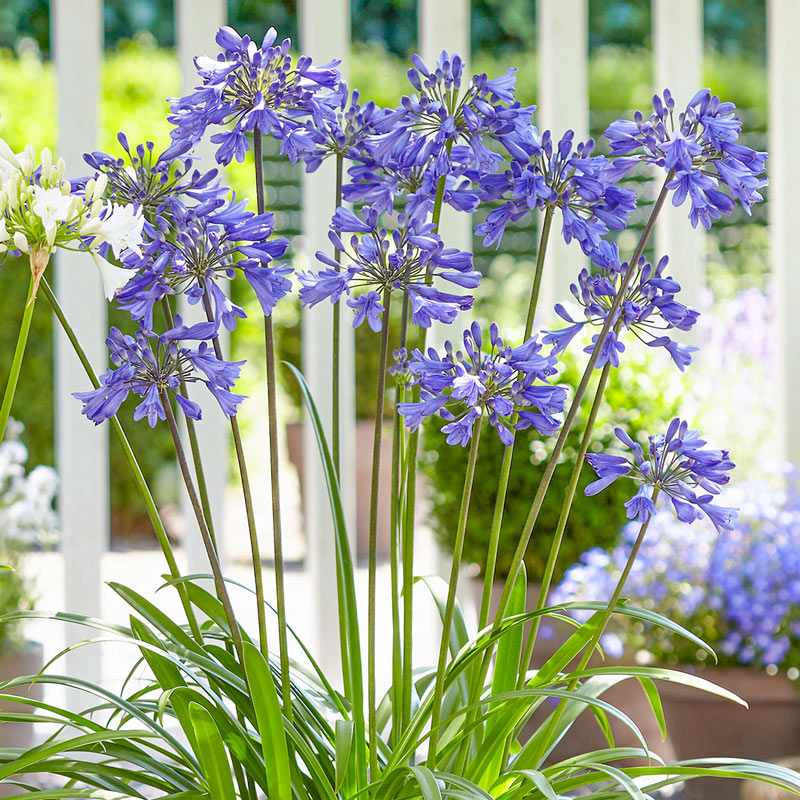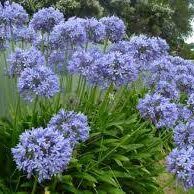Agapanthus Companion Plant Kingdoms: Perfect Pairings for Your Yard
Agapanthus Companion Plant Kingdoms: Perfect Pairings for Your Yard
Blog Article
Grasping the Art of Agapanthus Treatment: Important Actions for Healthy And Balanced Growth and Vibrant Flowers
In the world of horticulture, the cultivation of agapanthus stands as a satisfying endeavor for those who look for to nurture these classy flowering plants. With their striking blooms and stylish vegetation, agapanthus has actually recorded the attention of gardeners worldwide. Nevertheless, attaining optimum growth and dynamic blossoms needs a nuanced technique that encompasses different crucial actions. From choosing the appropriate range to understanding trimming methods, the journey in the direction of growing growing agapanthus plants is complex and holds the crucial to opening the complete capacity of these agricultural treasures.

Picking the Right Agapanthus Variety

When choosing the best Agapanthus selection for your garden, think about elements such as climate suitability, blossom color, and development practice. Additionally, think about the environment in your region to make certain the Agapanthus selection you choose can grow in your certain conditions. Understanding the development practice of various Agapanthus selections is important for proper positioning within your yard.
Suitable Planting Problems
Considering the optimal environmental requirements is crucial for successful Agapanthus growing. Agapanthus plants are sensitive to cold temperatures and need to be safeguarded from frost throughout winter months.
To make sure healthy growth and vibrant blossoms, plant Agapanthus bulbs at a depth of about 2-4 inches and room them 8-12 inches apart. Mulching around the base of the plants aids preserve moisture and subdues weed development.
Watering and Fertilizing Tips
Maintaining correct wetness degrees and supplying necessary nutrients are vital elements in the treatment routine for Agapanthus plants. When it involves sprinkling Agapanthus, it is critical to strike an equilibrium. These plants choose continually damp soil yet are prone to root rot if overwatered. Throughout the growing period, water deeply when a week, making certain the soil is well-draining to avoid waterlogging. In hotter climates or throughout periods of dry spell, more regular watering might be essential to keep the dirt uniformly damp. However, decrease watering in the winter to stop water logged conditions.
Feeding Agapanthus is essential for advertising healthy and balanced development and prolific blossoms. Use a balanced fertilizer, such as a 10-10-10 formula, in the early springtime as brand-new growth emerges. By complying with these watering and her latest blog fertilizing suggestions, you can ensure your Agapanthus plants thrive and produce vivid, long-lasting blooms.
Pruning Strategies for Agapanthus
Pruning Agapanthus plants at the proper times and with correct strategies is critical for keeping their health and promoting ideal growth and flowering. The optimal time to trim Agapanthus remains in late wintertime or early spring prior to new development arises. Start by getting rid of any type of yellowing or dead leaves near the base of the plant. Cut them as close to the ground site web as possible without damaging the arising shoots.
For flowered stems, wait until the blossoms have withered and then trim them back to the base. This not just cleans up the plant's look however additionally encourages the growth of new blossom buds. Deadheading spent blossoms can additionally reroute the plant's power right into producing even more flowers as opposed to establishing seeds. Nevertheless, if you wish to collect seeds for proliferation, leave some flowers to dry and fully grown on the plant.
Bear in mind to make use of clean, sharp tools to make specific cuts and decrease the threat of presenting conditions. Agapanthus. Routine trimming will certainly aid keep your Agapanthus looking cool and healthy and balanced while making certain a bountiful screen of gorgeous blossoms
Handling Common Parasites and Diseases
After making sure appropriate pruning strategies for Agapanthus, it is important to attend to typical bugs and diseases that can influence the health and vitality of these plants. Agapanthus plants this article are typically durable yet can still come down with particular concerns. One usual pest that affects Agapanthus is the Agapanthus gall midge. This little, orange fly lays its eggs in the vegetation, leading to distorted growth and flower buds that stop working to open. To battle this parasite, trim and ruin any type of afflicted plant parts and consider utilizing insecticidal soap.
In addition, Agapanthus plants can experience from root rot if they are planted in inadequately draining dirt. By being attentive and taking timely action versus illness and pests, you can assist your Agapanthus plants prosper and create vibrant blooms. Agapanthus.

Verdict
To conclude, understanding the art of agapanthus treatment includes selecting the right variety, offering optimal planting conditions, appropriate watering and feeding, proper trimming strategies, and resolving common bugs and illness. By complying with these essential steps, you can ensure healthy and balanced development and vibrant flowers for your agapanthus plants. Remember to frequently keep track of and maintain your plants to promote their general wellness and durability.
To ensure healthy and balanced development and vibrant blooms, plant Agapanthus bulbs at a deepness of regarding 2-4 inches and area them 8-12 inches apart. By complying with these watering and feeding suggestions, you can guarantee your Agapanthus plants prosper and create dynamic, lasting blossoms.
One common insect that affects Agapanthus is the Agapanthus gall midget. Furthermore, Agapanthus plants can suffer from root rot if they are planted in poorly draining pipes soil. By adhering to these crucial steps, you can guarantee healthy development and dynamic blossoms for your agapanthus plants.
Report this page